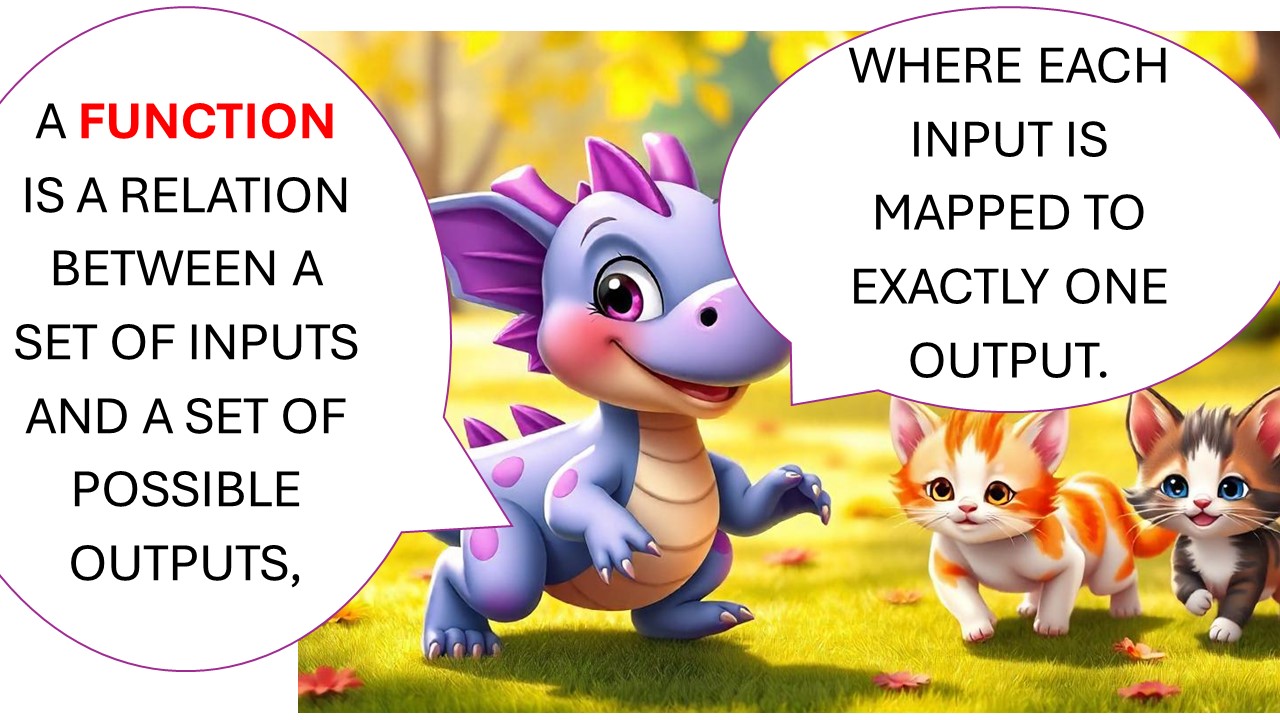
A function in mathematics and computer science is a relation between a set of inputs and a set of permissible outputs. It assigns each input exactly one output. Functions can be simple or complex, depending on their application. Here are some examples:
Examples
Linear Function:
- Definition:
- Example:
- Description: This function represents a straight line with a slope of 2 and a y-intercept of 3.
Quadratic Function:
- Definition:
- Example:
- Description: This function forms a parabola. Here, the vertex of the parabola is at (2, 0).
Exponential Function:
- Definition:
- Example:
- Description: This function grows rapidly as x increases, with a base of the natural logarithm
.
Trigonometric Function:
- Definition: Functions like sine, cosine, etc.
- Example:
- Description: This function oscillates between -1 and 1 with a periodic pattern.


Real-World Functions
Distance Function:
- Definition:
- Example: If a car travels at a constant speed of 60 miles per hour for 2 hours, the distance traveled is
miles.
- Description: This function calculates the distance traveled given the rate and time.
Interest Function:
- Definition:
- Example: For a principal amount of $1000 at an interest rate of 5% for 3 years, the interest is
dollars.
- Description: This function calculates the amount of money accumulated after interest is applied over time.
Discover more from Science Comics
Subscribe to get the latest posts sent to your email.
